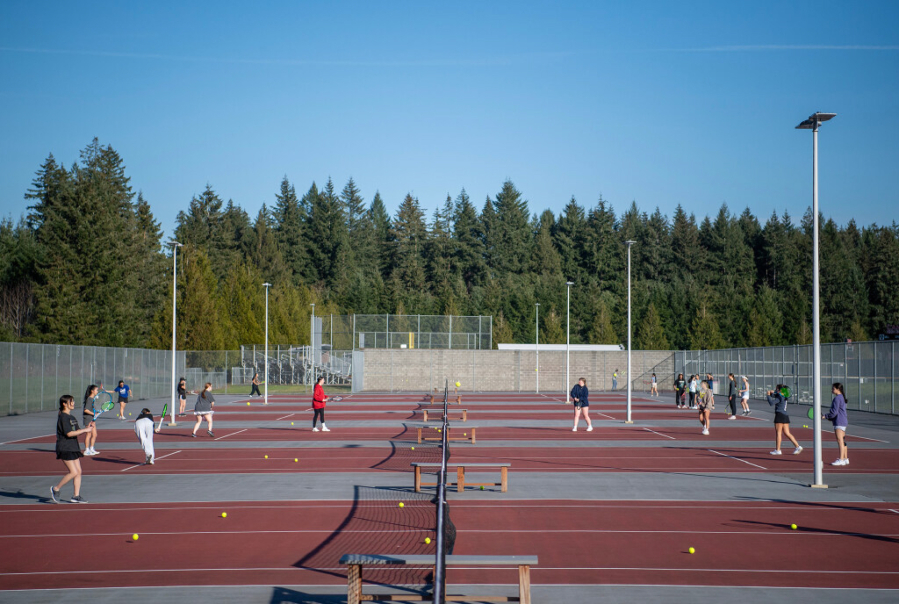A significant dispute has emerged within the Camas School District regarding ambitious plans to cover its outdoor high school tennis courts with an all-season “bubble” and enter into a lengthy 30-year contract with a nonprofit tennis organization to manage the facility. This unexpected opposition has not only consumed considerable time and patience but has also introduced unforeseen financial implications, escalating the project’s overall cost.
The escalating tennis court controversy has directly impacted the district’s budget, with an additional $12,000 recently tacked onto a consultant’s contract. This increase brings the total cost for MacKay Sposito consultants, who are overseeing the conditional use permit process, to $165,000, underscoring the tangible financial burden of the unexpected public resistance.
Consultants from MacKay Sposito revealed that their initial $153,000 agreement with the Camas School District had anticipated a permitting process with minimal public involvement and limited controversy. However, the reality proved starkly different, with the project encountering a significantly higher level of public opposition and procedural complexity than originally projected, necessitating extended work.
The heart of the contention lies in strong objections from various community members, including the owners of a nearby private tennis facility. These individuals challenged the district’s proposed partnership with the USTA, arguing that enclosing the courts and opening them to paying public members would convert school property to commercial use, thereby raising concerns about traffic, safety, and the long-term best interests of the community.
Critics, such as Clark Vitek of Evergreen Tennis, specifically highlighted the unprecedented nature of integrating a public tennis center onto an existing high school campus. They asserted that such a move was not aligned with the school’s best interests or the intentions of voters who approved facility bonds, raising questions about accountability and the potential commercialization of school facilities development.
Despite the robust community engagement and vocal opposition, Camas Hearings Examiner Joe Turner, following an April 28 conditional use permit hearing, found no substantive evidence to support claims that the covered tennis facility would negatively impact student safety or exacerbate traffic conditions near the high school. This ruling effectively cleared a major hurdle for the district’s ambitious plans.
Turner’s decision paves the way for the district to proceed with its partnership with the USTA, allowing for the enclosure and upgrade of the tennis courts, the addition of restrooms and a lobby to create a sprawling 60,000-square-foot facility, and the installation of additional parking spaces. This agreement also transfers facility management to the USTA for at least 30 years, aiming to promote tennis programs for all Camas students and provide the Camas High girls tennis team with all-weather access.
Camas schools Superintendent John Anzalone expressed optimism following the ruling, stating that no appeals were anticipated and that the project should be “out of the woods” regarding conditional use permits. The school board’s unanimous vote to approve the additional $12,000 for consultant services, covering work related to the extended public hearing and comprehensive responses to public comments, underscores the direct public education funding implications and the rising consultant costs associated with navigating significant public pushback.






Leave a Reply